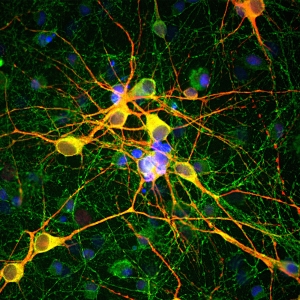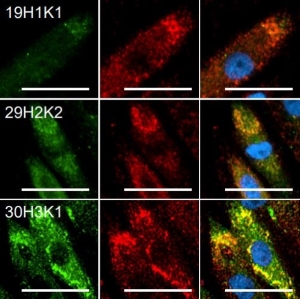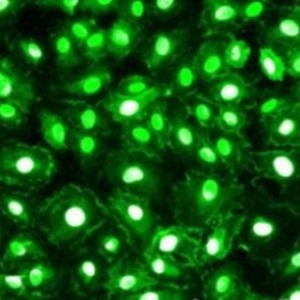Product Details
Product Sizes
| Size | List Price | Price | Cart |
|---|---|---|---|
| 150 ul | $369.00 | Add to Cart | |
| 50 ul | $165.00 | Add to Cart |
PGP9.5 is a soluble cytoplasmic protein with a molecular weight of approximately 25,000 kD. It is present in neurons and in cells of the diffuse neuroendocrine system. PGP9.5 functions as a tissue-specific ubiquitin carboxyl terminal hydrolase isoenzyme. This enzyme is also known as UCH-L1. Because of its abundance in nerves, it has been widely used as a marker for peripheral nerve fibers. It was also discovered as a gene mutated in some rare famial forms of Parkinson's disease. Interestingly a common allelic variant of UCHL1, the S18Y polymorphism is actually protective against Parkinson's disease. It is also a marker for cells of the diffuse neuroendocrine system and their tumors. |
Images
PGP9.5 staining of epithelial cells in porcine distal colon. Nerve fibers immunoreactive for the neural marker PGP 9.5 (red) are in close proximity to both IgA-immunoreactive plasma cells (green) and epithelial cells immunoreactive for SC (blue) in the colonic crypts. Abbreviations: Cr, colonic crypt; L, intestinal lumen; SM, submucosa. Scale bars: A, 100 μm. J Neuroimmunol. Published online 2007 February 21. doi: 10.1016
PGP9.5 staining of rat DRGs (Dilution 1:500)






